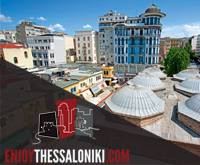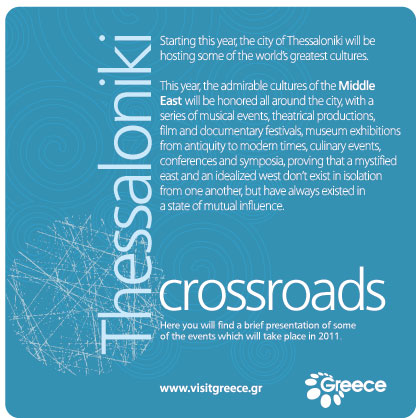Introducing the city


Dating back to the Hellenistic Times, Thessaloniki has always been the epicentre of great developments, processes and events, being a principal gateway from the Mediterranean to the Balkans and Central Europe. Founded in 315 B.C. on the site of earlier prehistoric settlements, the Hellenistic City developed an increasingly important role as part of the Kingdom of Macedonia and later on the first Roman Tetrarchy. The Byzantine and Ottoman Times were those that defined the city's character: Thessaloniki was the second city of the Byzantine Empire, playing a leading spiritual and artistic role in the Balkans, frequently taking the lead in the secular and theological thinking of the age. The monuments surviving from that period are representative of the Byzantine culture and art over the centuries and Thessaloniki is regarded as an open museum of Byzantine art. Furthermore, the city prospered as a trade and business centre of the Ottoman Empire, and was defined by the multi-ethnic populations that resided and set out in the area. Thessaloniki was historically known for its prominent communities of Jewish, Turks, Serbs, Bulgarians that lived together with the Greeks for centuries.
In the beginning of the 20th century, this canvas was enriched by the advent of Greek refuge populations from Asia Minor that settled here and diffused new cultures, ethics, customs, and tastes in society. That was also the period when Thessaloniki was incorporated in the Greek State (1912) and when later (1917), a destructive fire, swept away the historic city centre. The contemporary image of Thessaloniki is a natural consequence of that period: the newcomers became the media for the contemporary future and Thessaloniki prospered again in social, economical and cultural terms.
Thessaloniki through its history has been a melting pot of diverse cultures, religions and traditions and the city's multi-cultural heritage and profile was shaped by the work and deeds of emperors, saints, apostles, philosophers and thinkers, but also by its local residents, its refugees and immigrants. Thessaloniki, sometimes covered by the thick mist, sometimes stormed by the heady wind "Vardaris", yet always defined by its flairs and flavours, is nowadays an economic and cultural center, a vibrant focal point for the Balkans and a geographic landmark between the Eastern & Western Civilization.
Although penetrated by stories of joy and sorrow of the past, today the city enjoys a vibrant urban life, enriched by the largest student community in Greece, the increasing cultural production by numerous museums, organisations and smaller urban collectives and finally by the exquisite physical location that through time has enabled openness and inspiration.





